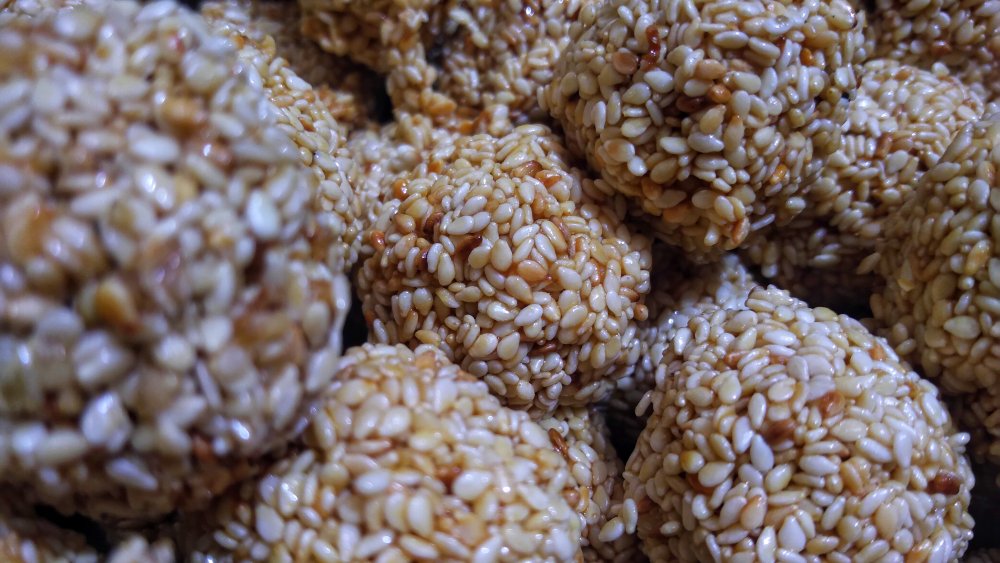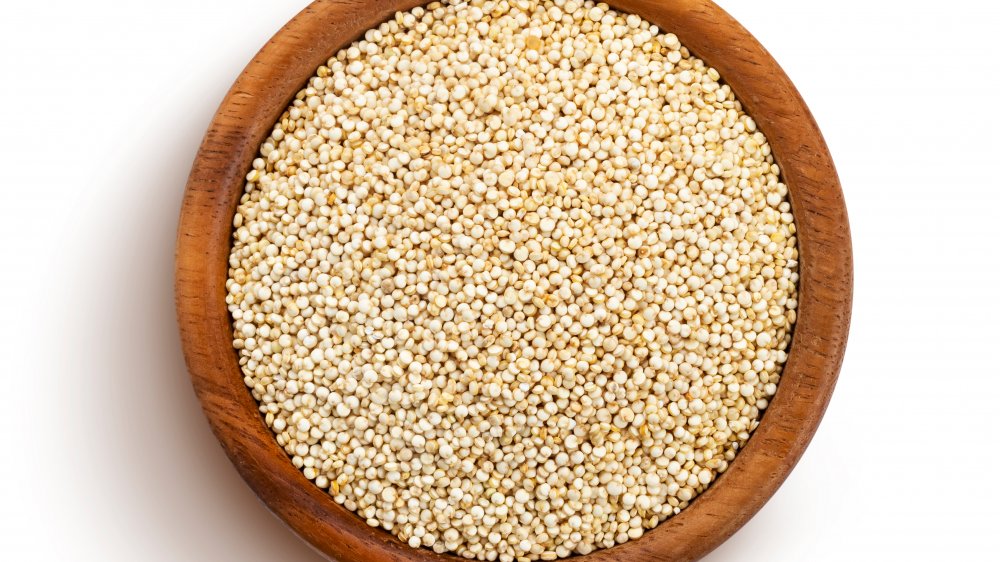The Real Difference Between Amaranth And Quinoa
Fans of superfoods might view quinoa as a super grain that can leap tall fitness goals in a single bound. Amaranth, another kind of grain, is also a nutritional powerhouse like quinoa but might not be as well-known. Not that humans haven't had plenty of chances to get to know it well over the course of millennia. Amaranth goes back about 8,000 years and was popular among the Aztecs, per The Guardian. It is cultivated in West Africa, China, and other parts of the world.
Quinoa was also first cultivated thousands of years ago, per the FOA, and continues to make a splash with its health benefits. While they're lumped together with grains, contrary to what people believe, quinoa is technically a seed, and so is amaranth. That makes them suitable for those who avoid gluten in their diets. They also don't take very long to cook: it takes around 10 to 15 minutes to cook quinoa while you need around 20 minutes to prepare amaranth. Not bad at all, right? But despite the fact that they're similar in some ways, the two foods do have noteworthy differences.
They taste different from each other
Quinoa and amaranth both have solid nutritional profiles. As explained by Women's Health Mag, one cup of cooked amaranth is around 251 calories and has four grams of fat and 46 grams of carbohydrates while one cup of quinoa will provide you with nearly 132.5 calories, 3.5 grams of fat, and 39.4 grams of carbohydrates. When it comes to protein, amaranth is slightly higher at 9.4 grams while quinoa has 8.2 grams of protein.
The most obvious difference between the two definitely comes down to their flavor profiles. While quinoa is mild in general and doesn't have a strong flavor, amaranth is notable for its powerful flavor, which can be a bit too much for some folks. Amaranth is also associated with having a strong, grassy aroma when cooked. Despite its distinctiveness, amaranth is worth considering as a replacement for white rice. So is quinoa, which also works well as a healthy pizza crust or in a hearty casserole. You could also try adding amaranth to a Buddha bowl for a unique meal or making a quinoa wrap.

